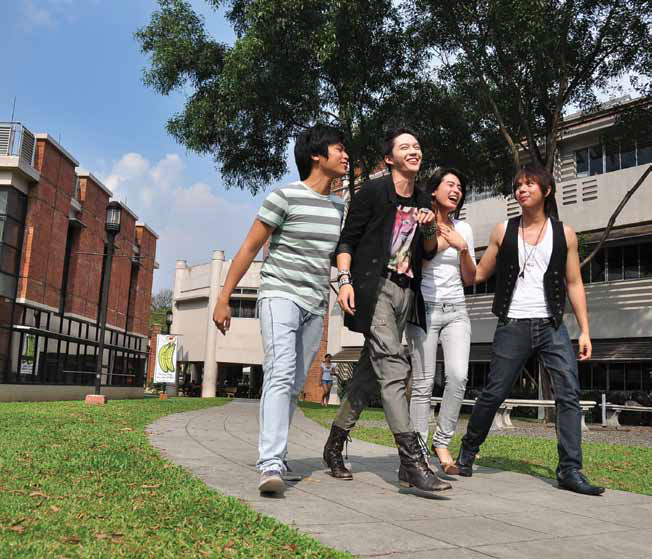
Born this way. LGBT individuals Dave Anastacio, Third Fernandez, Karla Aguas and Paolo Buenviaje (L-R) are members of a community that has come to be part of the Ateneo life. Photo by Migi C. Soriano
Tie-dyed shirts, bell-bottomed jeans, peace, freedom, rock, love—it was the ‘70s, and it was a revolution.
Suddenly, the world became less monochromatic. Its structures were twisted into forms previously unseen—fuelling emancipation in the process. It was a revolution of many flags: the Left’s hammer and sickle, the pacifists’ anti-war banners, the hippies’ colorful bandanas.
It was also the first, true emergence of the gay liberation movement, with its rainbow flag hoisted high as one of society’s greatest countercultural challenges. Loyola was no exemption. For the first time in Ateneo’s history, the bakla had a notable presence in campus.
However, the ‘70s was still an early time—people were still much less open-minded than today. In fact, being a gay Atenean then meant being considered a problem in campus, a social liability suffering from a disorder.
The nation and the LGBT
In her masteral thesis, Loyola Schools Psychology Assistant Professor and former International Lesbian and Gay Association Asian Representative Mira Alexis Ofreneo explains that there are two prevalent notions of homosexuality in the Philippines: that it is a sin, and that it is a sickness. These two notions arose from the country’s colonial experiences under Spain and the United States.
Under Spain, the Roman Catholic Church came to be a preeminent institution in the Philippines. That period gave rise to a culture of machismo, one reason behind Filipino society’s strong homophobic sentiments. The Church also condemns homosexual acts.
On the other hand, erratic psychological models brought to the country by the Americans gave rise to the notion of homosexuality as a disease. As late as the ‘70s, many still considered homosexuality a disorder—something that has now been widely debunked. The American Psychological Association, for example, has categorically declared that non-heterosexual orientations are natural variations of human sexuality.
“[Philippine society] is not open to talk about these kinds of issues,” Chinese Studies lecturer Dr. Francisco Navarro observes. He says that compared to other countries, Philippine society treats lesbian, gay, bisexual and transgender (LGBT) individuals as just “being there,” often displaying ambivalence towards them.
For instance, the military—seen as a macho man’s bailiwick—has been allowing openly gay individuals to enlist since 2009. On the other hand, towards the end of 2009, the Commission on Elections barred the LGBT party-list Ang Ladlad from participating in the polls, a decision later overturned by the Supreme Court.
Dolls in Loyola
There is a notable LGBT presence in the Ateneo. The frequently used path from Xavier Hall to the MVP Building leads to a group of benches that function as the de facto headquarters of the Dollhouse.
The Dollhouse is the foremost LGBT group in the Ateneo, and is celebrating its 10th anniversary this year. Its main purpose is to serve as a welcoming community for LGBTs in campus, and to promote the acceptance of LGBT individuals.
Current Queen Mother Sean Galvez’s projects this year include the Anti-Homophobic Action in Society and the gay empowerment effort dubbed Bakla Ako, Pakialam Mo.
The bakla, the homosexual
The LGBT experience in the Ateneo goes back to the university’s days as an all-male institution. On January 26, 1970, three years before the Ateneo’s turn to coeducation and amidst the emergence of the international gay liberation movement, The GUIDON published an article entitled “Survey Probes Stude Views Towards ‘Bakla’ on Campus.”
The article featured the paper’s own study about the community’s opinions about the bakla. The bakla, as defined by the article, is an effeminate male individual who appropriates the female appearance, speech, attitude and attire. The bakla also finds pleasure in the beautification of others, and does not participate in ‘manly sports.’ The creators of the survey did not define the bakla as homosexual. (See sidebar on page 3.)
For openly gay campus celebrity and Dollhouse Sex-Gen Third Fernandez however, this definition is lacking and myopic, and functions more as a stereotypical description than a definition. “How come they can’t define the bakla [by] saying he is attracted to the same sex, which is in fact the essence of being bakla?” he asks.
Nevertheless, the mentioned article highlighted the fact that the bakla had a growing presence in the all-male Ateneo. To the Ateneans back then, this was a bad thing.
Burning flowers on the hill
51.6% of the old survey’s respondents categorically said that the presence of the bakla students in campus is a problem. Most of the students who held this view proposed their expulsion, while some called for their psychiatric treatment or a shift to coeducation.
47.6% of respondents, on the other hand, didn’t see the bakla’s presence as a problem per se. To them, it is just part of “natural social illness.”
The article’s authors seem to have held the same view. The article concluded, “… Our tolerance [of the bakla] should not be blind permissiveness. It should be the basic acceptance that he has a problem and needs help and understanding.”
To this, Fernandez expressed much shock. “Bring me back to the ‘70s, and if I read [that article], I would just laugh,” he says. “It’s funny how people thought that way before. And to think that the ‘70s was all about liberation and freedom… It’s a little ironic.”
Beyond the Dollhouse
The old survey showed that there was a wide spectrum of reactions to the bakla. The most frequent reactions were disgust, repulsion and indifference. Still, a few respondents held the non-committal ‘live-and-let-live’ view, while some expressed pity, sympathy and understanding for the bakla.
Fernandez is pleased about the presence of these divergent views. “The survey reflected almost all sides, which is good,” he said in Filipino. “It’s healthy that we have a discourse on this, instead of leaving it as a taboo—‘ay bakla ‘yan, huwag na nating pag-usapan’ (‘oh, that’s gay, let’s not talk about it’).”
The divergent views on the bakla mirror the diversity within the LGBT community itself. For recent graduate Dan Dustin Caw (AB Psy ‘10), for example, the LGBT community in the Ateneo can be divided into two groups. “The only visible ones are [the Dollhousers],” he says. “The others are the more quiet ones: those who are part of the LGBT but don’t believe that they’re in the position to benefit from making themselves known.”
For Caw, this difference in the two groups’ visibility makes for a skewed representation of the LGBT community. He believes the student body should not box their perception of homosexuals based only on specific gay individuals or groups in campus.
Nevertheless, Caw, who considers himself as part of the latter group, says that being gay should not prohibit anyone from fully taking part of campus life.
Emancipation
The LGBT community in the Ateneo has definitely come a long way; the queer has come to be part of the Ateneo experience.
For example, plays with gay and lesbian themes, such as Bare, Zanna, Don’t! and The Vagina Monologues, have all been staged in campus recently, sans censorship. LGBT individuals, such as Fernandez, have repeatedly been elected to top Sanggunian positions. The Dollhouse, on the other hand, operates free from administration repression.
The numbers also speak volumes. (See sidebar on page 1.) Old stereotypes that used to box the LGBT have significantly weakened, as the diversity within the gay community has become more apparent.
Moreover, from the 51.6% who saw the bakla as a problem during the ‘70s, the number of people who hold this view has dramatically dropped to 9.9%, based on a new survey by The GUIDON and the Ateneo Statistics Circle.
Also, while majority of the respondents in the old survey expressed disgust or anger with the bakla, around two-thirds of respondents in the new survey say that they are pleased with LGBT individuals, and three-fourths have expressed delight about them.
Indeed, while homophobia continues to burden the Atenean LGBT community, such sentiments have lost dominance in the four decades since the old survey’s publication.
“[Homosexuals] are the same as other [people],” a respondent to the new survey says, for example. “Only the sexual preference differs.”
Another says, “I react to [people’s personality], not to their sexual preference.”
Fernandez is happy about these changes in the Ateneo. “The Ateneo has grown to be very mature, very accepting, and very liberal,” he says.
Indeed, he himself seems to be the perfect testament to this.
With reports from Luther B. Aquino

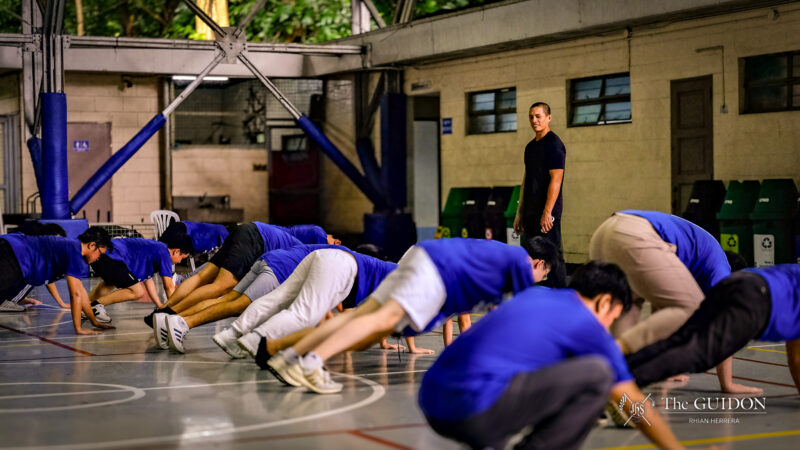
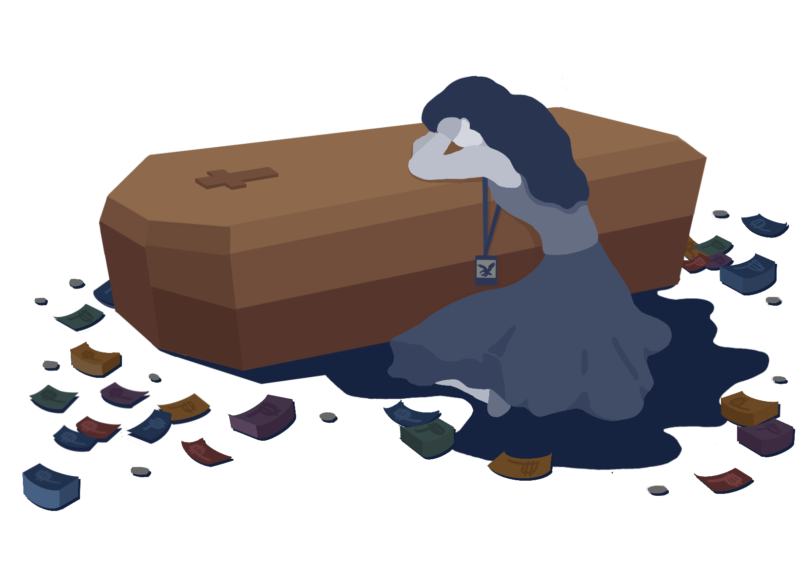

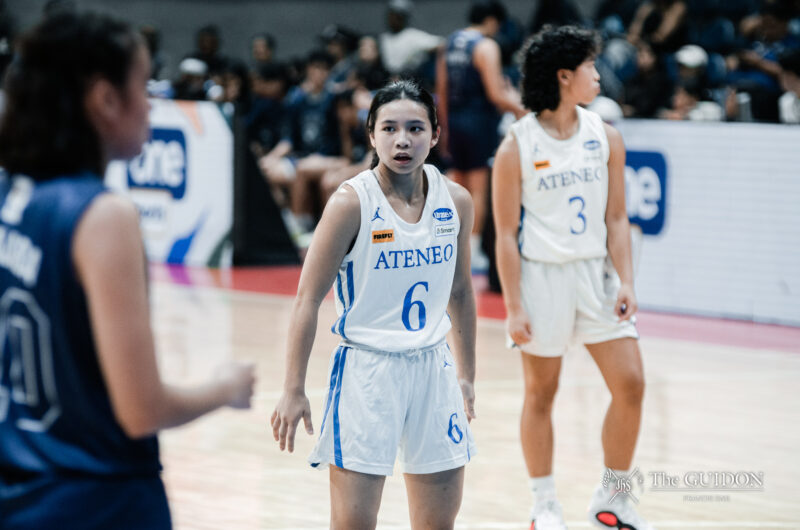
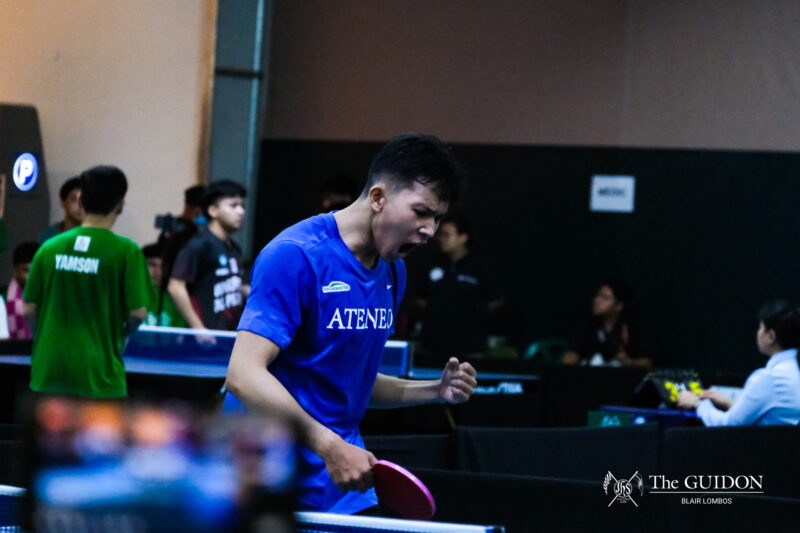
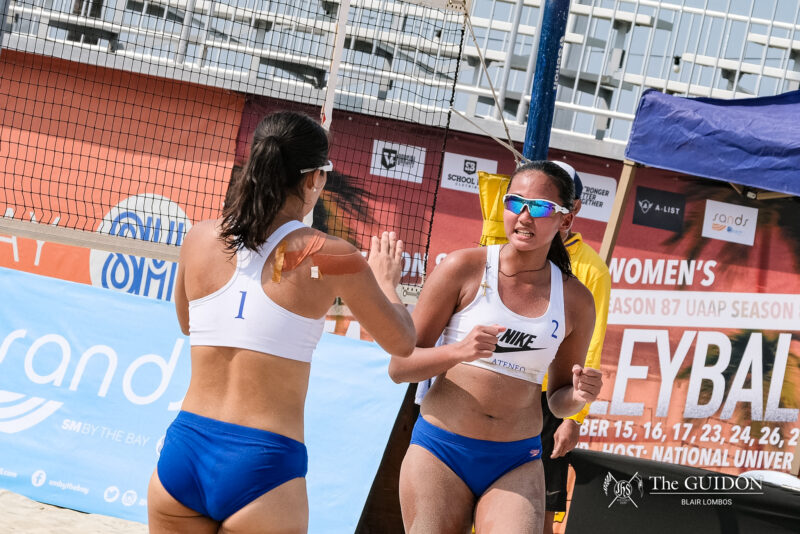
[…] January 6, 1970, an article entitled “Survey Probes Stude Views Towards ‘Bakla’ on Campus” was published in The GUIDON. It featured a survey carried out in the university, as an effort to […]
[…] More than forty years after the article “Survey Probes Stude Views Towards ‘Bakla’ on Campus” was published in this paper, The GUIDON, together with the Ateneo Statistics Circle, once again probes the community’s attitudes towards variant sexuality*, using the old survey as a lens for today’s changing social mores. Read the cover article for more context. […]